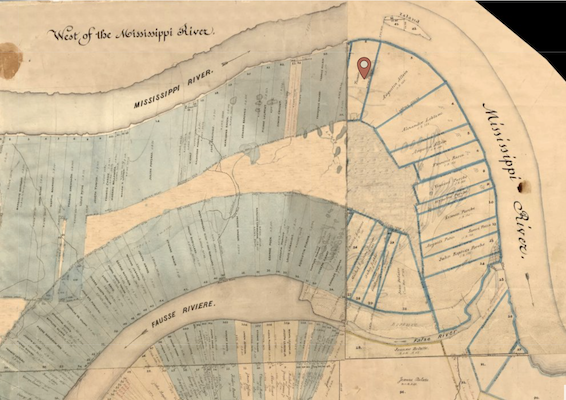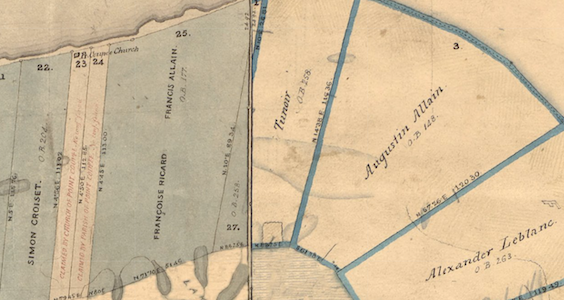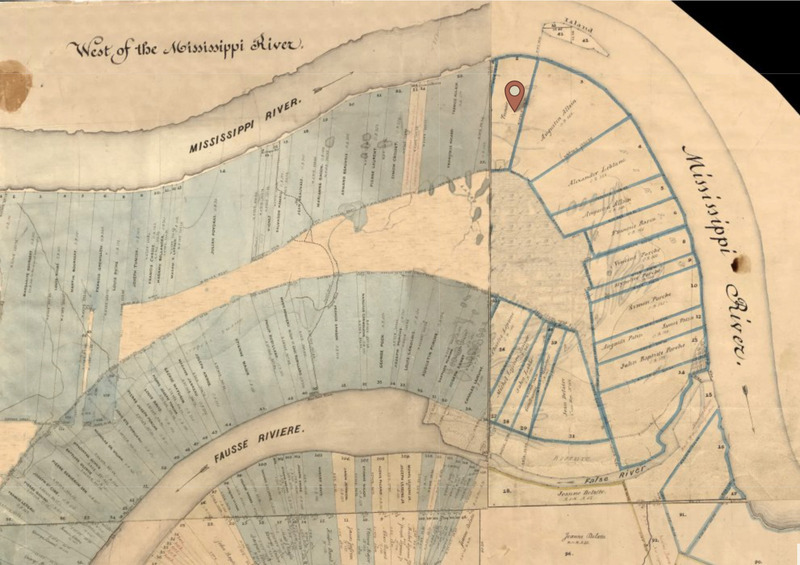Cecila Pursues the Freedom of Naneta Story Info
- Title:
- Cecila Pursues the Freedom of Naneta
- Date:
- 1793-08-07
- Story:
-
Among the most potent bonds forged by individuals and communities forced into systems of slavery throughout the Americas, kinship networks provided a source for sustaining identity and gave power to the hope of securing freedom for oneself – as well as for one’s family, loved ones, friends, and descendants. This case, an emancipation suit, sees Cecilia, india libre, an Afro-Indigenous woman–the daughter of María of the Patouca nation (Plains Apache)–sues Don Juan Bautista Tounoir on behalf of her niece, Naneta, for her freedom. Due to the supposed illegality of the enslavement of Indigenous people under Spanish Dominion, Cecilia’s legal argument begs that her niece be declared free on this basis due to her maternal descent or, failing that this be ordered by the court, that Naneta would still be valuated in order for Cecilia to purchase her freedom under cortación proceedings. In bringing this case to court, Cecilia utilizes kinship as a central part of her legal argument, demanding Naneta’s freedom through her mother’s line.
The newly established Spanish colonial administration declared the enslavement of Indigenous people illegal. However, not only were the laws pertaining to Indian slavery frequently broken or outright ignored in Spanish Louisiana, including by members of the government, Naneta’s enslaver, Tounoir, died during the course of the legal proceedings against him.1 Yet, by building her argument around this precedent, Cecilia showcases a dynamic understanding of the law and a keen ability to maneuver through legal procedures in order to secure the freedom of those in her kinship network. Shedding light on the significance of race and ethnicity in the minds of European colonial administrators, as well as evidencing the self-determination and ownership of heritage among people of color in the Americas, this case points towards a complex landscape of legality, identity, and Black/Native life in Spanish.
Additionally, this case occurs in the same place and time as the Point Coupée uprisings of 1791 and 1795.2 Cecilia and Naneta’s familial ties–their identities as Afro-Indigenous women and their association with the events of the Point Coupée uprisings–build out a story of complex racialized constructions and Afro-Indigenous solidarities. Honoring the ambitions of Black and Native peoples to secure freedom for themselves and for their extended kinship networks, the strength that these relationships and networks display should not go unnoticed. Cecilia’s adept use of social and legal systems in order to secure the freedom of Naneta is a mark of brilliance and of perseverance. Cecilia and Naneta’s case showcases just one example of the ongoing defiance of forced victimization and abuse that enslaved people had to endure under Spanish colonial rule in Louisiana. The geo-temporal context of the conspiracy at Point Coupée provides further testament to the constant quest to dismantle this system of enslavement and unfreedom/s from the inside out.
Further Resources

Fig. 1. This map from the Battle of New Orleans shows the property of Salomon (Santiago) Prevot (Prevost), enslaver of Juan Pedro alias Bonhomme. Though Naneta was a resident of the Attakapas District, Prevot owned properties in the Vieux Carré (on the 500 block of Decatur, later owned by the Baron Pontalba) and plantations (indigo and dairy) in the present-day areas of Holy Cross and Chalmette. In the Lower 9, his neighbors included none other than Roberto Montreuil, enslaver of Roseta and her son Domingo alias Lubin, as well as the infamous Macarty family, amongst others. Source: Survey Plat Map T4S R10E, 1858, LA - Louisiana Meridian and Survey Plat Map T4S R11E, 1858, LA - Louisiana Meridian as embedded on “Louisiana Slave Conspiracies,” first accessed 2019, lsc.berkeley.edu.
Fig. 2. Detail of above map showing neighboring Ricard, Allain, and Leblanc plantations. Source: Ibid., Map T4S R11E.Notes
-
For more on Indigenous enslavement in Spanish Louisiana as well the descendants of María of the Patouca nation, see Leila K. Blackbird, “‘It Has Always Been Customary to Make Slaves of Savages’: The Problem of Indian Slavery in Spanish Louisiana Revisited, 1769-1803,” The William & Mary Quarterly vol. 80, no. 3 (July 2023): 525-558. See also, Kimberly Hanger, Bounded Lives, Bounded Places: Free Black Society in Colonial New Orleans (Durham: Duke University Press, 1997). ↩
-
Ibid., Blackbird. María’s grandchildren included Marie and Antoine Sarrazin of the Pointe Coupée Uprising. See also, Jack D. L. Holmes,“The Abortive Slave Revolt at Pointe Coupée, Louisiana, 1795,” Louisiana History: The Journal of the Louisiana Historical Association vol. 11, no. 4 (1970): 341–362; Gwendolyn Midlo Hall, “The 1795 slave conspiracy in Pointe Coupée: Impact of the French Revolution,” Proceedings of the Meeting of the French Colonial Historical Society vol. 15 (1992): 130-141; “Louisiana Slave Conspiracies,” accessed August 2019, lsc.berkeley.edu; and “Antoine is Willing to Burn it All Down,” in “Kinship & Longing: Keywords for Black Louisiana,” Olivia Barnard, Emma Bilski, Leila Blackbird, Jessica Marie Johnson, and Ellie Palazzolo, eds., Journal of Scholarly Editing 41 (June 2024): scholarlyediting.org/issues/41/kinship-and-longing. ↩
-
- Keywords:
- freedom suit Indian slavery mixed-race family kinship Afro-Indigeneity coartación emancipation girlhood Indigenous peoples valuation
- Latitude:
- 29.957
- Longitude:
- -90.063
- Documents:
- d0263

